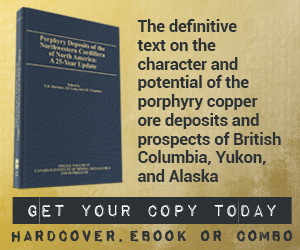Library Magazine Articles New guidelines for international reporting of Russian mineral resources and reserves
New guidelines for international reporting of Russian mineral resources and reserves
Stephen Henley - Nov 2010
With the privatization of many Russian mining companies in the early 1990s, the question of international financing of Russian mining operations first arose. All mining operations had sets of resource/ reserve estimates that could be used in the valuation process, but unfortunately these followed a classification standard that could not easily be reconciled with others, such as the CIM Standards & Guidelines for Resources & Reserves and the JORC Code, both conventionally used on international markets.
Many different mappings were proposed between the Russian and international classifications, but these differed according to the deposit type and depending on their authors’ views on the reliability of Russian exploration and reserve estimation methods.
As a result of the uncertainty, most projects were deemed to require a new independent deposit modelling exercise by a “bankable name” international consulting firm. This led rapidly to new problems. The estimates produced by such studies would often be irreconcilably different from the Russian numbers.
This sometimes led to real problems, both in the markets and governmental, when reported resources and reserves were very different from those approved by GKZ (the State Commission on Mineral Reserves).
However, a review of the definitions and use of both the CRIRSCO-aligned and Russian classification systems for mineral resources and reserves showed that the differences were much less than had been imagined. Even the definition of the Russian “Competent Expert” was surprisingly similar to that of the (Canadian) Qualified Person or (international) Competent Person (QP/CP), although the more prescriptive Russian system allows less scope for professional judgement.
Development of the guidelines document
In 2006, a working group was established jointly by CRIRSCO and GKZ to investigate the possibility of setting up conversion procedures between the Russian and international reporting systems. The idea was to avoid the subjective questions of relative reliability and confidence, and to work purely from the published definitions. By 2008, it was agreed in principle that a set of conversion guidelines could be developed. In early 2010, a consultation draft of the guidelines document was published. By July 2010, the consultation was completed and the document formally published on August 25 of this year.
This document provides general guidance for conversion from Russian classified mineral resources to international CRIRSCO-aligned classifications. Under all circumstances, the actual conversions and final decisions rest with the professional judgement of the QP/CP. The conversion is in one direction only, from Russian to international. The opposite direction is not possible, as the Russian classification has a larger number of categories. It also is not a requirement because the Russian system is itself integrated with procedures and documentation formats, which are unlikely to correspond directly with those used internationally.
Mapping Russian to CRIRSCO classifications
In broad terms, the translation is simple. Russian categories map to mineral resources:
- C1, B, A map to Measured Mineral Resources
- C2 maps to Indicated Mineral Resources
- P1 maps to Inferred Mineral Resources
In more complex deposits (Russian “complexity class 4”) there will be relatively little C1 material and this will map to Indicated Mineral Resources. The Russian P2 and P3 categories of “prognostic resources” have no CRIRSCO equivalent, and express more general concepts of mineral potential of a region. The mapping is shown in a generalized form in the figure.
Often C2 and C1 resources are quoted, but they are “authors’ estimates” and have not been registered with GKZ. These have therefore not passed through the associated “expert review” independent audit which can, and does, modify reported figures. For this reason, it is not recommended, in general, that these authors’ estimates be converted to higher than the Inferred category.
The GKZ registration procedure does take into account most of the modifying factors that would need to be considered in transferring material to mineral reserves. However, it does not take into account any adjustment for losses or dilution. For this reason, the QP/CP would need to apply his/her own judgement (as always) in transferring any material to reserves categories. There may be Russian “Exploitation Reserves” defined informally at mining operations that will incorporate loss/dilution factors, which may be usable, or the QP/CP may need to form his/her own opinion on these and all other modifying factors. By definition, Exploitation Reserves will have been derived from GKZ-registered resource estimates, as they relate to mining operations that otherwise would not have been permitted.
In summary, there is now a set of guidelines to assist the QP/CP to report Russian resources and reserves under international standards without needing a separate deposit modelling exercise. The QP/CP must take responsibility for assuring himself/ herself of the veracity of the estimates and of all the modifying factors.
For further information, download the guidelines from www.crirsco.com. Detailed information on the Russian reporting system is available at www.gkz-rf.ru, but be forewarned that most of what is available here is in Russian.
Author
Stephen Henley is an independent consulting geologist with extensive experience on projects in Russia- CIS. He is currently the independent geological adviser to the board of Petropavlovsk plc and an equity participant in independent Russian PGM explorer OAO Pana. He is deputy chairman of PERC and a PERC representative on CRIRSCO. Steve was a co-founder of Datamine and chairman of the company from 1981 to 1993.

.png)
